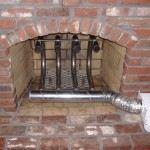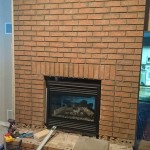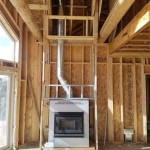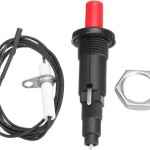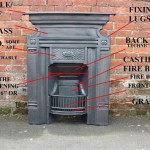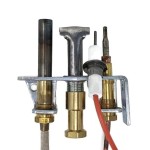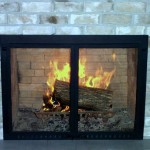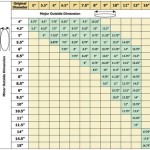Here's an article on childproofing fireplace hearthstone wood stoves, designed to be informative and professional:
How To Child Proof Fireplace Hearthstone Wood Stoves
Fireplaces and wood-burning stoves, especially those with hearthstone surfaces, offer warmth and ambiance. However, they also present significant safety hazards to young children. The radiant heat, sharp edges, and hard surfaces can lead to burns, bumps, and other injuries. Effective childproofing measures are therefore essential for homes with these features. A comprehensive approach involving barriers, safety education, and ongoing vigilance is necessary to ensure the safety of infants and toddlers.
Hearthstone, a type of soapstone, is a popular material for wood stoves and fireplace surrounds due to its excellent heat retention properties. This characteristic, while desirable for heating, prolongs the time the surface remains dangerously hot after the fire has gone out. Children are naturally curious and often unaware of the potential dangers, making them particularly vulnerable to accidental contact with hot surfaces. The following methods outline how to effectively childproof a fireplace or wood stove with a hearthstone element.
Creating a Physical Barrier
The most effective method of childproofing a fireplace or wood stove is to create a physical barrier that prevents children from accessing the dangerous area. This barrier should be sturdy, secure, and tall enough to deter climbing. Several types of barriers are available, each with its own advantages and disadvantages.
Fireplace Screens: While decorative fireplace screens can add to the aesthetic of a room, they often provide insufficient protection against a determined toddler. Many screens are lightweight and easily toppled, offering little resistance. To be effective, a screen must be heavy, securely anchored to the floor or wall, and have small enough openings to prevent small hands from reaching through. Consider models specifically designed for child safety, which typically feature robust construction and secure locking mechanisms.
Hearth Gates: Hearth gates are specifically designed to enclose the entire fireplace or wood stove area. These gates are generally made of metal or durable plastic and can be configured to fit various hearth sizes and shapes. Look for gates that are adjustable, easy to install, and feature a secure locking mechanism that children cannot easily manipulate. The gate should also be tall enough to prevent climbing and be made of materials that will not become excessively hot to the touch.
When choosing a hearth gate, consider the following factors: the size and shape of your hearth, the height and weight of your child, and the overall aesthetic of your room. It is crucial to select a gate that is specifically designed for fireplace or stove use; regular baby gates may not provide adequate protection against the intense heat generated by these appliances. Installation should be done according to the manufacturer's instructions, ensuring that the gate is securely anchored to the wall or floor.
DIY Barriers: In some cases, a custom-built barrier may be the best solution, especially for unusually shaped or sized hearths. This option allows for greater flexibility in design and materials. However, it also requires careful planning and construction to ensure that the barrier is sturdy, safe, and effective. When building a DIY barrier, consider using materials that are heat-resistant, non-toxic, and free from sharp edges or splinters. The barrier should be securely anchored to the wall or floor and be tall enough to prevent climbing. It is advisable to consult with a professional carpenter or contractor if you are unsure about the safety or feasibility of a DIY project.
Regardless of the type of barrier chosen, it is essential to regularly inspect it for signs of damage or wear. Loose screws, broken hinges, or cracked panels should be repaired or replaced immediately to maintain the barrier's effectiveness. It is also important to ensure that the barrier is properly installed and securely anchored to the wall or floor. A poorly installed barrier can pose a greater risk than no barrier at all.
Managing the Hearthstone Surface Temperature
Hearthstone's heat retention properties make managing its surface temperature critical. Even after the fire has been extinguished, the stone can remain dangerously hot for several hours. Several strategies can be employed to mitigate this risk.
Insulation: Applying heat-resistant mats or blankets to the hearthstone surface can help to reduce its surface temperature and provide a buffer against accidental contact. Look for mats and blankets that are specifically designed for fireplace use and are made of materials that will not melt, burn, or release harmful fumes when exposed to heat. The insulation should cover as much of the hearthstone surface as possible, especially areas that are easily accessible to children. The insulation material should also be durable and easy to clean.
Timing: Careful timing of fireplace or stove use is also crucial. Avoid using the fireplace or stove when children are most likely to be unsupervised or playing nearby. If possible, use the fireplace or stove only when you can closely monitor your children. When the fire is extinguished, allow the hearthstone to cool completely before allowing children to play near the area. This may require several hours, depending on the size and intensity of the fire.
Water: Never use water to cool down the hearthstone rapidly. Rapid temperature changes can cause the stone to crack or even shatter, creating an even greater safety hazard. Instead, allow the hearthstone to cool down naturally over time. You can expedite the cooling process by opening windows or using a fan to circulate air in the room.
Monitoring: Regularly monitor the surface temperature of the hearthstone, especially after the fire has been extinguished. Use a non-contact infrared thermometer to check the temperature of the stone's surface. This will allow you to determine when it is safe for children to be near the area. Keep a record of the surface temperature and the time it takes for the stone to cool down. This information can be used to plan future fireplace or stove use and to ensure that children are not exposed to dangerously hot surfaces.
Edge Protection: The edges of the hearthstone can also be sharp and pose a risk of cuts or scrapes. Install edge protectors made of soft, impact-absorbing materials to cushion the edges of the hearthstone. These protectors can be attached using adhesive or Velcro and can be easily removed when no longer needed. Ensure that the edge protectors are securely attached and will not come loose easily. Regularly inspect the edge protectors for signs of wear or damage and replace them as needed.
Education and Supervision
Physical barriers and temperature management are not foolproof. Educating children about the dangers of the fireplace or wood stove and providing constant supervision are equally important. Even with the best safety measures in place, a child can still find a way to access the dangerous area if not properly supervised.
Verbal Instructions: Clearly and repeatedly explain to children that the fireplace or wood stove is hot and can cause burns. Use simple, age-appropriate language that they can understand. Emphasize the importance of staying away from the fireplace or stove and never touching it. Reinforce these instructions regularly, especially before and after using the fireplace or stove.
Consistent Rules: Establish clear and consistent rules about fireplace or stove safety and enforce them consistently. For example, establish a "no play zone" around the fireplace or stove and ensure that children understand that they are not allowed to play in that area. Consistently enforce these rules, even when you are not using the fireplace or stove. Consistency is key to helping children understand and follow the rules.
Supervision: Constant supervision is essential, especially for young children. Never leave children unattended near the fireplace or stove, even for a few minutes. When using the fireplace or stove, keep children within sight and reach at all times. If you need to leave the room, either take the children with you or extinguish the fire completely. Always be aware of where your children are and what they are doing.
Visual Aids: Use visual aids to reinforce safety messages. For example, post a sign near the fireplace or stove that warns of the danger of burns. Use pictures or diagrams to illustrate the potential hazards. Make these visual aids age-appropriate and attention-grabbing.
Positive Reinforcement: Use positive reinforcement to encourage safe behavior. Praise children when they follow the rules and stay away from the fireplace or stove. Offer rewards for safe behavior, such as extra playtime or a special treat. Positive reinforcement is more effective than punishment in promoting safe behavior.
Practice: Conduct drills to practice safety procedures. For example, practice what to do if clothing catches fire. Teach children to stop, drop, and roll. Practice these drills regularly, so that children are prepared to react quickly and safely in an emergency.
Childproofing a fireplace or wood stove with a hearthstone requires a multi-faceted approach, including physical barriers, temperature management, and education. Consistent effort and vigilance are crucial to ensuring the safety of children in a home with these potential hazards. Regularly review and update your childproofing measures as your children grow and develop.

No Child Proofing For Our Fireplace Hearthstone
Child Proofing Your Stove Hearth Com Forums Home

Fireplace Gate Baby Proof Your Hearth

Diy Fireplace Hearth Idea For Child Proofing

Fireplace Cushion For Babies S

Fireplace Kidsproofing Services Alhambra Ca Child Safe Installation

Hearthstone Waitsfield Dx Cast Iron Direct Vent Gas Stove Mazzeo S Stoves Fireplaces

Fireplace Kidsproofing Services Alhambra Ca Child Safe Installation

Maintaining A Wood Buring Fireplace Monmouth County

Hearthstone Craftsbury2 Wood Stove Tru Hybrid Matte Black 3
Related Posts

